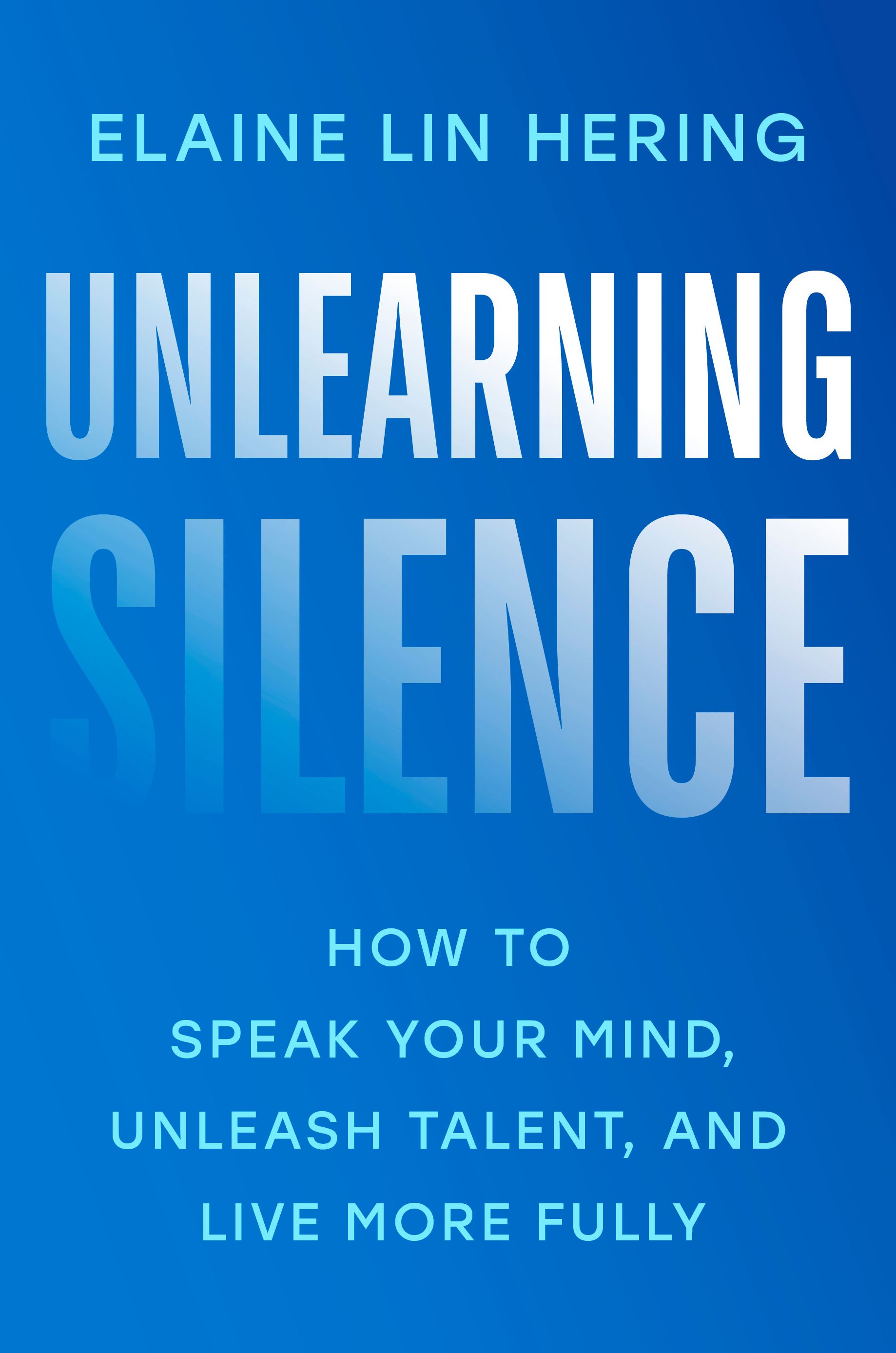“Just speak up” is common career advice we’ve all heard before when faced with a challenge at work. But in a culture where silence is often rewarded, and speaking up is sometimes penalized, former Harvard Law School lecturer and speaking coach Elaine Lin Hering says it’s past time for us to retire this outdated advice.
Her latest book, “Unlearning Silence: How to Speak Your Mind, Unleash Talent, and Live More Freely,” explores how leaders can push past biased systems and cultures that silence some of us more than others to tap into our true potential. In the below excerpt, she details three anchors leaders can rely on to not only activate their voice at work, but to build better buy-in and engagement from their team. — Courtney Connley

Photo Credit: Penguin Random House
Excerpt from, “Unlearning Silence: How to Speak Your Mind, Unleash Talent, and Live More Freely.”
Whether at work or at home, people have long told me to just speak up. But we know speaking up is not as easy as flipping a switch or reciting a script. In situations where you are flabbergasted, speechless, or shocked, what do you actually say, and how do you get yourself in a place where you can actually have words and meaning come out of your mouth?
Below are three anchors based on the pitfalls I’ve observed in my own life speaking up and in the years spent coaching others to do the same. These anchors provide a template for knowing what you need to cover when you open your mouth so that people are more likely to hear and understand you. Like an anchor used to keep a boat from drifting away due to winds or currents, each of these anchors help us stay the course on what to communicate, even when people distract us or change the topic or context of the conversation.
Start With Why
Author Simon Sinek popularized the idea of starting with why as a fundamental business principle. In order to get buy-in from your teams, motivate others, and achieve almost anything, you have to start with why. He points to research that shows that starting with why maps with the engagement of our brains, as why resonates not just with the neocortex, but with the limbic system. It provides emotional context for making decisions.
The same goes for understanding why we want to use our voices. What’s in it for me—long known by the acronym WIIFM—captures the idea that there has to be something in it for each of us in order for us to pay attention. So many things clamor for our attention that we need some hook in order to know why we ought to listen to anyone else. Is the suggestion going to help people think better of me? Allow us to collaborate more effectively across functions? Reduce pain going forward? People are more likely to listen and respond favorably if they understand why the idea you’re sharing matters—or should matter— to them. But knowing why isn’t just for the people you’re trying to reach. Fundamentally, knowing why we’re speaking up is key for each of us. Why would we put ourselves through the gauntlet of calculations, risks, and possible consequences of speaking up if there wasn’t something—a why—that mattered more to us than risk and discomfort?
Make the Ask Clear
Much like the friend who is offering solutions when the other person just wants them to listen, or the manager who is not providing enough direction to team members on a project because they don’t want to micromanage, intuiting what others are asking of us is a hard job to do well. Making clear what we are asking of people allows them to make informed decisions about whether to accept or reject our requests.
The mismatch between what we want from others and what others think we want from them is all too common. Being clear with what we are looking for from the other person allows us to give them a clear role to play. While asking for what we want can be difficult, the clarity that ensues helps well-intended efforts not miss the mark.
So, before you make your next ask, consider these questions. Do you want someone to hear you out? To be a thought partner? To allow you to vent but not fix the problem? To offer solutions to the problem? Being explicit about what you’re looking for from the other person allows them to make an informed decision as to whether it’s a role they can play. More often than not, people want to be helpful but simply don’t know how to show up in the moment. Giving them an explicit role helps them know what will be helpful to you.
Embrace Resistance
Starting with why and making clear asks all help manage the resistance we inevitably encounter when we use our voice. As you speak your mind, others can (and will) have their reactions. But their reactions don’t have to negate your voice. Instead of seeing others’ resistance as a reason to stay silent, know that resistance is a normal part of the process and embrace it.
Criticism is a form of engagement, even if it is not the way we would prefer someone to engage with us. Resistance contains information that can lead us to a better outcome. A specific example is someone raising issues with the way ideas are cultivated within a team. As discouraging as it is to have someone call out a weakness in your idea or to question your judgment, their resistance creates an opportunity for others to engage further and propose different solutions to keep the idea alive.
Knowing that resistance is a natural part of using your voice helps us be less triggered by it. Instead of getting caught up in the frustration of feeling criticized or rejected, we can embrace resistance by acknowledging that, however frustrating, it is a part of the process.
It’s worth noting that having a strong backup plan is the not-so-secret factor that makes it far easier to weather someone’s resistance. BATNA—best alternative to a negotiated agreement—is the classic negotiation term for what you will do if the other person can’t agree to something that works for you. A common negotiation pitfall is assuming that you don’t have any alternatives, which simply isn’t true. Our alternatives might not be great, but remembering that you have a BATNA and actively working to improve what seems like the best of those alternatives gives you leverage, even if you don’t end up choosing the alternative. Speaking up always takes place in the shadow of our alternatives— the stronger our BATNA, the less we have to worry about the other person’s unwillingness to listen or comply.
While many of us want speaking up and using our voices to be once-and-done instances, the reality is that it’s a collective, interactional process and it’s more than a one-time event between two people who exist in their bubble.
By starting with why, making clear asks, and embracing resistance, you will have three anchors to reach for and rely on as the waves of opinion and criticism—and, well, life—come your way. Using these anchors when speaking up means you will be more prepared to engage in any conversation in a productive way.
From "Unlearning Silence" by Elaine Lin Hering, published by Penguin Life, an imprint of Penguin Publishing Group, a division of Penguin Random House, LLC. Copyright © 2024 by Elaine Lin Hering.



